Lt. Cmdr. Joji Higai could not have been more pleased in late January 1943.
Touted throughout the Imperial Japanese Navy as one of its best torpedo plane commanders, he had been handed a plum assignment that suited his reputation.
He and his 15-plane unit from the 701st Air Group, in coordination with a second group of 16 Mitsubishi G4M torpedo bombers, were ordered to rise from Rabaul’s airfield and attack American naval and air forces in the Solomon Islands in one of World War II’s first nighttime torpedo attacks.
Approximately 700 miles to the southeast, U.S. Navy Rear Adm. Robert C. “Ike” Giffen cautiously guided a conglomeration of carriers, cruisers, escort carriers and destroyers toward the Solomon Islands. His superior, Adm. William F. Halsey, after recharging the American defensive stand at Guadalcanal, hoped Giffen’s foray would be the first of many U.S. offensive actions in the region.
For months the American Marines and Navy had been knocked on their heels by the victorious Japanese, but Halsey’s arrival infused renewed energy in the U.S. forces fighting in the region. A speedy series of American land and sea triumphs pushed the foe backward and gave a slim advantage to the United States.
As 1943 dawned, Halsey optimistically said: “December had shown us faint signs that the tide was turning. By January no one could doubt that it had begun to run with us.”
Halsey realized that victory in the Solomons had not yet been guaranteed and that he needed more reinforcements, additional ships and aircraft, and tons of ammunition. Nevertheless, he felt confident that U.S. forces were strong enough to attempt a modest offensive.
He eagerly awaited developments as Giffen’s force steamed toward Guadalcanal.
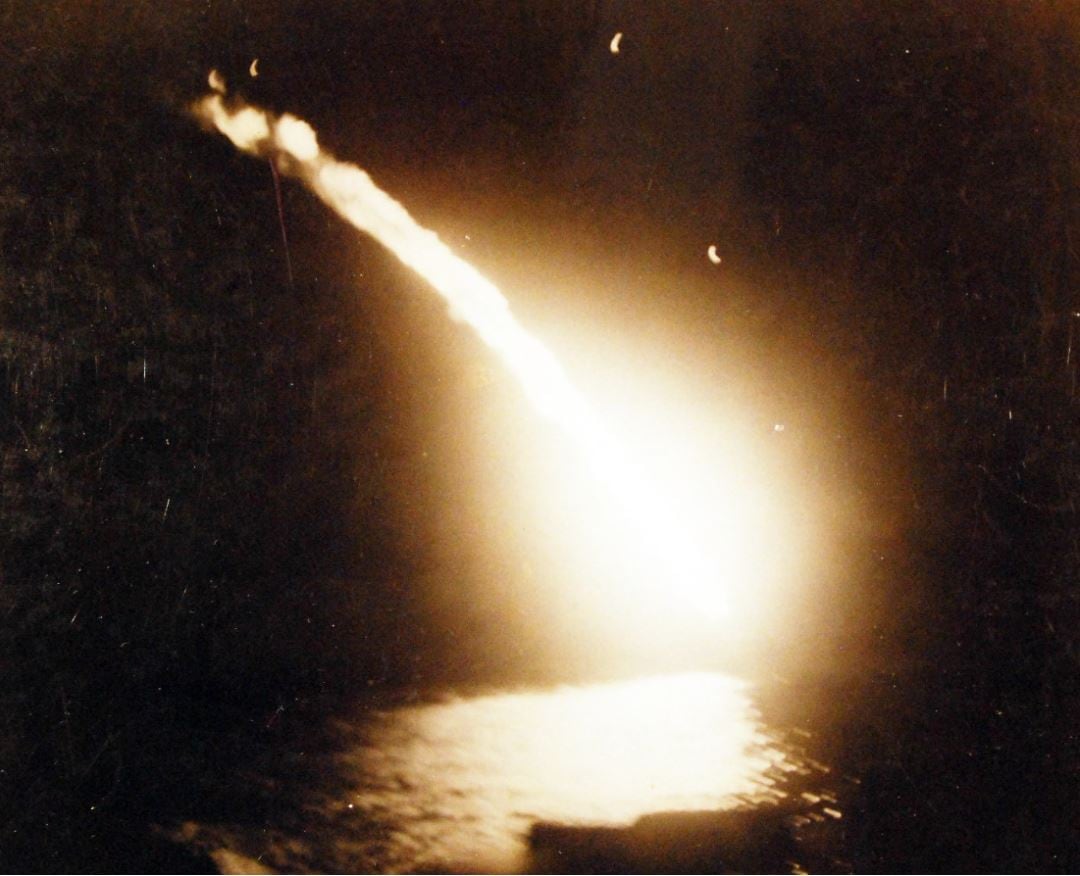
The action began unfolding in late January, when American aerial reconnaissance spotted indications of a Japanese buildup at their major port of Rabaul, on the island of New Britain, and at Buin, on the island of Bougainville.
An increasing number of troop transports and freighters mingled with destroyers at those locations, and Japanese carriers and battleships appeared to be on the prowl north of Guadalcanal. Radio intelligence supported the theory that a Japanese move was imminent.
Since the Japanese had repeatedly poured reinforcements into the struggle for the Solomons, American planners at Pearl Harbor concluded that this was yet another such operation.
Halsey was under pressure to relieve the 2nd Marine Division, weary from months of vicious combat with crack Japanese land forces on Guadalcanal. The aggressive admiral jumped at an opportunity to combine two operations — he intended to send in troop transports to bring out the 2nd Marine Division while shielding the transports with as much naval power as he could gather in the South Pacific.
By doing so, he hoped to entice the Japanese into a surface engagement.
Halsey’s opponent, Adm. Isoroku Yamamoto, commander in chief of the Combined Fleet, would not be tricked, however. The man who had planned the successful attack on Pearl Harbor had subsequently seen his navy face a reversal in the Coral Sea, catastrophic losses at Midway, and continued pounding in the Solomons.
With fuel supplies running low, the Japanese commander could not mount a vast naval operation. Instead, he planned to send Higai and his 32 torpedo bombers – known as “Bettys"” – against the Americans.
Halsey assembled a formidable force.
Six separate groups headed toward the Solomons instead of one unit because each had assembled at a different harbor. Four groups steamed anywhere from 250 to 400 miles behind the two forward groups. The ships in the rear would rush in to meet any large Japanese threat that might unfold in response to the American attempt to land reinforcements on Guadalcanal.
The four consisted of Rear Adm. Walden L. Ainsworth’s Task Force 67, composed of four light cruisers and four destroyers; Rear Adm. Willis A. Lee’s three battleships and four destroyers of Task Force 64; Rear Adm. DeWitt Ramsey’s carrier group, centered on Saratoga; and Rear Adm. Ted Sherman’s carrier group, anchored by Enterprise.
As for the two groups of ships that steamed ahead of the rest, the four transports and four destroyers of Task Group 62.8 conveyed the replacements for the 2nd Marine Division.
Giffen’s potent Task Force 18 consisted of three heavy cruisers – Wichita, Chicago and Louisville – steaming in conjunction with three light cruisers – Montpelier, Cleveland and Columbia. Two escort carriers – Chenango and Suwannee – provided air cover, while eight destroyers – La Vallette, Waller, Conway, Frazier, Chevalier, Edwards, Mead and Taylor – circled the larger ships as a screen.
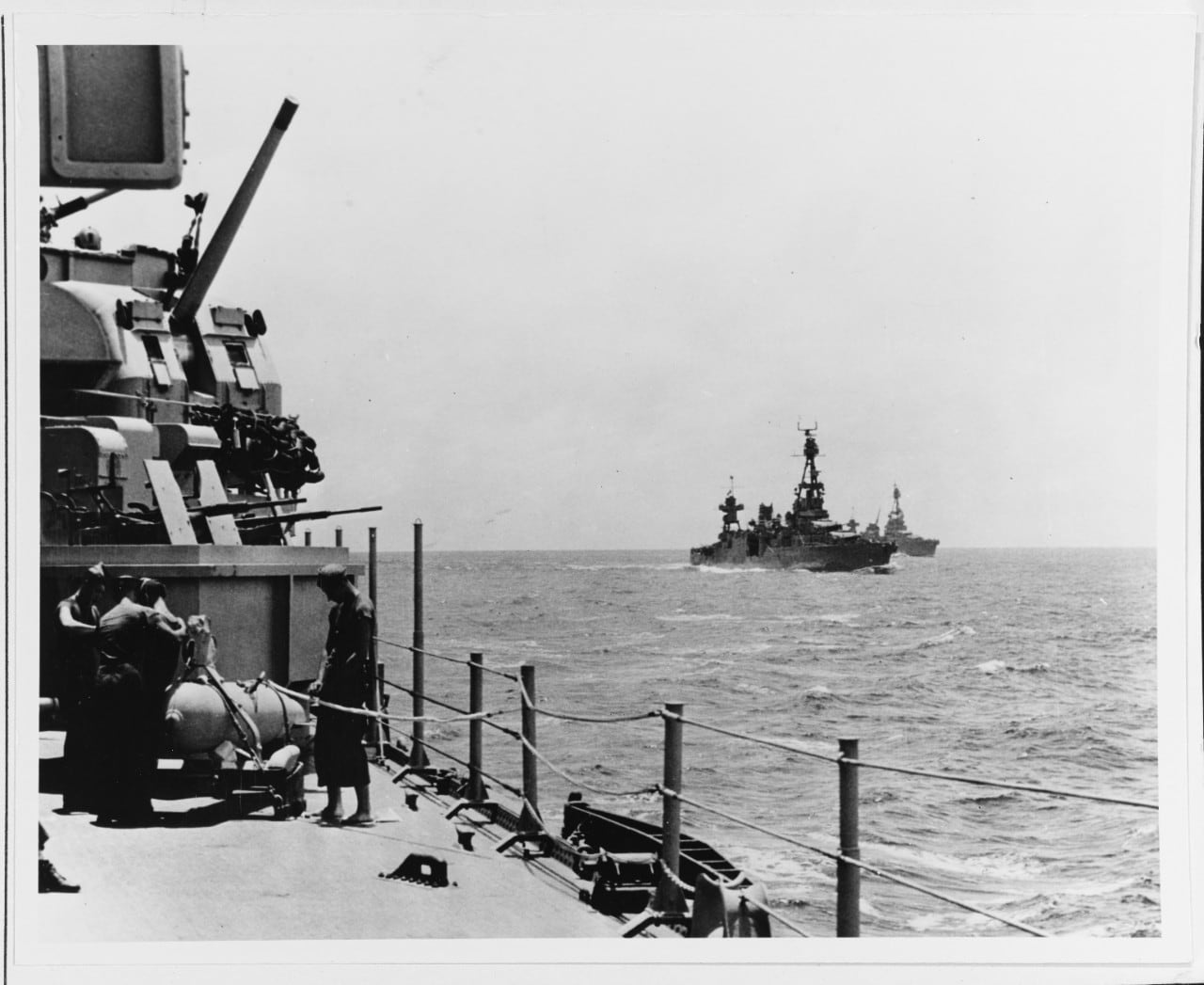
Ike Giffen was not new to command.
He had battled German U-boats in the Atlantic Ocean and led forces in North African waters, but he had never served in the Pacific, where air assaults on ships at sea were far more common. Giffen came from the old school of naval leadership and was a favorite of Adm. Ernest J. King, commander in chief of the U.S. Fleet and chief of naval operations.
Giffen commanded by the book, and he even refused to step aboard Halsey’s flagship because he detested Halsey’s open-necked shirts and ruffled caps.
Giffen guided Task Force 18 out of Efate on January 27, the same day the transport group departed Noumea. His orders were to rendezvous 15 miles off Cape Hunter, on Guadalcanal’s southwest coast, late on January 30 with the four destroyers that escorted the transports.
The combined force would then steam north through Solomon waters in search of Japanese ships while the transports dropped off Marine reinforcements at Lunga Point.
A string of mistakes and poor judgment by Giffen plagued the operation from the start.
Because of his experience in the Atlantic, he focused on a possible submarine threat while downplaying the danger from the skies. His decision to keep the slower escort carriers with his faster cruisers and destroyers slowed the entire group to 18 knots, the maximum speed attainable by the baby flattops.
The group also encountered delays each time the carriers had to turn into the southeast wind to launch or recover aircraft.
Had the escorts left port before the cruisers and destroyers, they could have arrived on station and waited for Giffen to join them. As it was, an impatient Giffen, who called the escorts his ball and chain, simmered while his group inched across the Pacific toward the rendezvous point.
Giffen arrived 50 miles north of Rennell Island, which rests 120 miles southeast of Guadalcanal, late in the afternoon of January 29.
His force steamed northwest toward its planned rendezvous at 24 knots, with his six cruisers split into two columns. To the starboard steamed Wichita, Chicago and Louisville, while Montpelier, Cleveland and Columbia advanced to port.
Because of his experience operating against German U-boats, Giffen stationed his six destroyers in a semicircle two miles ahead. While it was appropriate for the Atlantic, this formation left the ships open to air attack – the predominant method of Japanese assault in the Pacific.
The cruisers’ afterbeams and quarters were exposed to an attack because Giffen’s destroyers steamed in front.
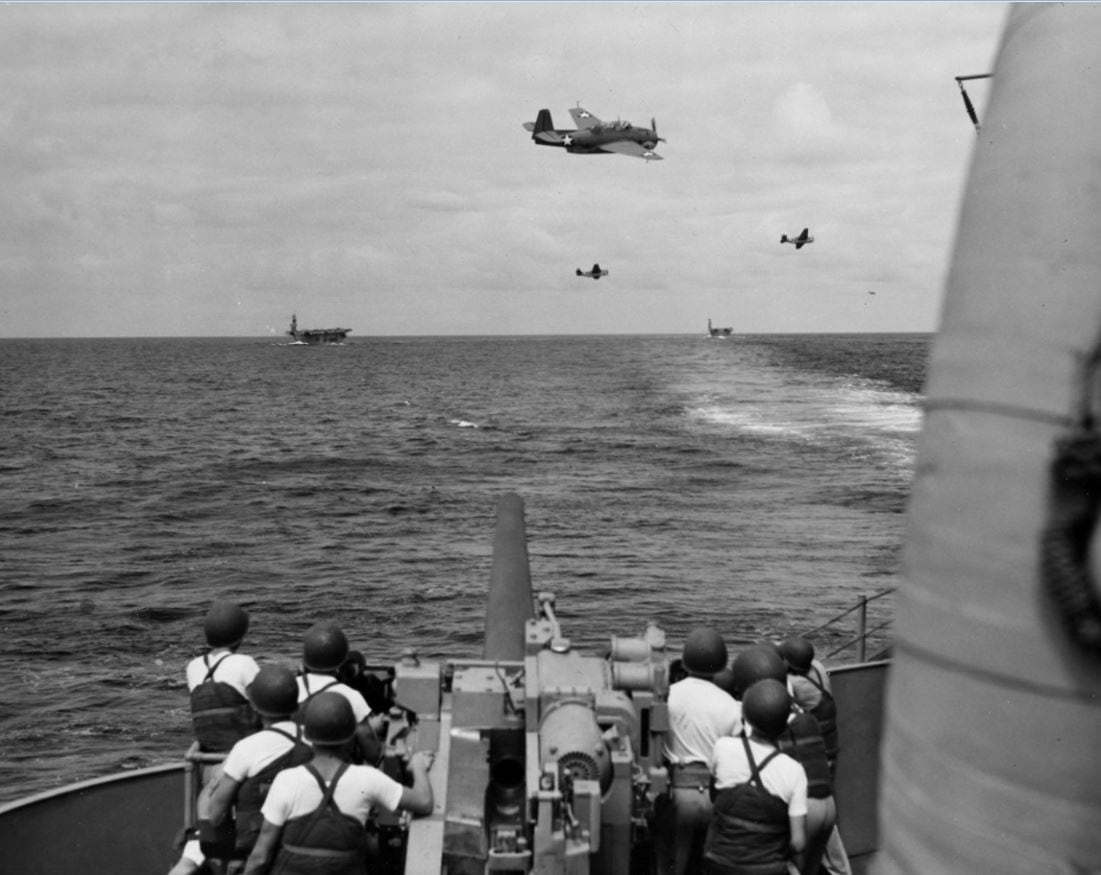
During the afternoon of the 29th, radar screens on board the ships registered unidentified aircraft northwest of Task Force 18.
Fighters leaped from the two escort carriers to search the skies, but they had to find the quarry on their own since Giffen had issued strict orders maintaining radio silence.
As a result, the planes received no assistance in pinpointing the radar sightings from the fighter-director team on board Chicago.
At 1850 the American aircraft returned to their carriers, having failed to spot anything. Never expecting the Japanese to mount an attack after dark, Giffen declined to send up another combat air patrol, despite the remaining daylight.
At about that same time, Lt. Cmdr. Higai approached the American task force with his 32 Betty torpedo bombers from Rabaul. Although radar picked up the planes, Giffen did not change course, alert his aircraft or issue orders to his ships about what they should do in case of attack.
All hell broke loose as Higai and his pilots descended toward their targets.
One American sailor looked at the radar plate in Wichita and described it as a disturbed hornet’s nest. To avoid silhouetting his aircraft by attacking out of the twilight, Higai had circled his force around Task Force 18 and approached from the darkness.
When the planes drew within 14 miles of Task Force 18, Higai split the aircraft into two groups and charged in.
One Betty headed toward Waller, dropped a torpedo at the destroyer and then strafed it and nearby Wichita.
A heavy stream of anti-aircraft fire found its mark, however, and the aircraft plummeted to the ocean in a fiery ball, near Chicago.
A second Betty sped between Chicago and Wichita and launched a torpedo that barely missed Louisville, then soared into the darkness.
The brief attack ended in moments. Higai’s first wave inflicted no damage on the American ships, which had managed to avoid all the torpedoes by zigzagging, and the Americans had downed at least one Betty.
Round one went to Giffen, but round two was shortly to begin.
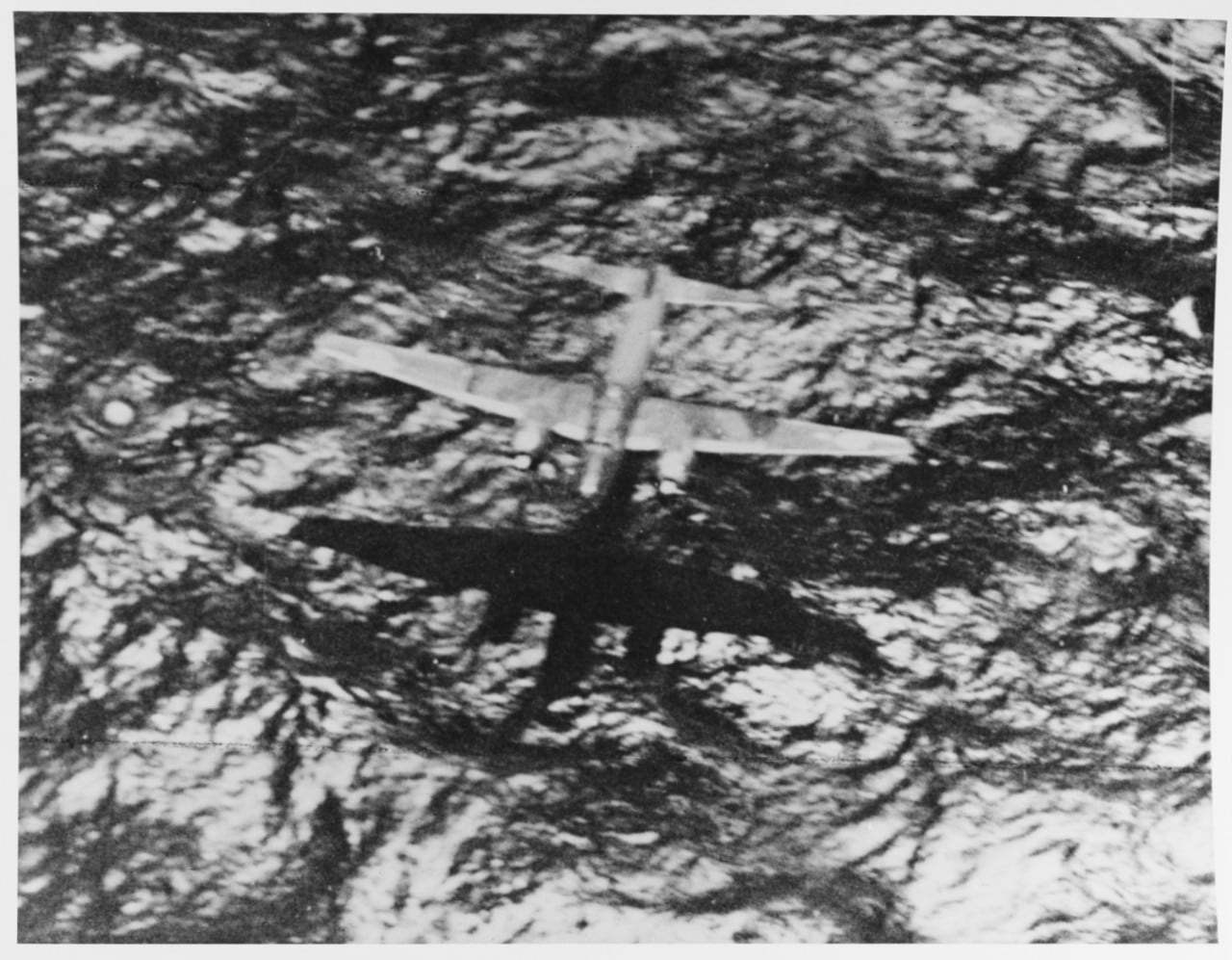
Giffen assumed the Japanese attack had ended. Still hoping to make his rendezvous, at 1930 hours he halted the ships’ zigzagging and headed on a straight course. While this may have increased his ship’s speed it also made them easier targets.
The Japanese took advantage of Giffen’s error.
One minute later, at 1931, Higai led the second group of Bettys from the east — and this time he could clearly see the targets, since Japanese scout planes had dropped parachutes from which dangled yellow-white flares. As they slowly descended to the ocean on both sides of the columns, the flares illuminated Giffen’s cruisers and destroyers.
Other clusters of red and green float lights relayed information to Higai about the ships’ speed and composition.
Brightly illuminated against the black backdrop of the Pacific Ocean and steaming in a straight course, Task Force 18 became an easy mark for Higai’s aviators, who focused upon Giffen’s right-hand cruiser column, consisting of Chicago, Wichita and Louisville.
Giffen did have one ace in the hole. His anti-aircraft gunners had the new proximity Mark-32 shell fuses, which automatically exploded whenever the shell came near an aircraft. Gunners did not have to hit a bomber; they only had to shoot in its vicinity.
The shells lived up to expectations. One Betty careened into the ocean astern of Waller.
Luck at first shielded the Americans from harm. One torpedo dropped from a Betty and churned through the waters toward Chicago but missed the warship by only a few yards.
A second torpedo smacked into Louisville but failed to explode.
At 1938 Higai dipped his aircraft and charged through thick anti-aircraft fire toward a ship. He continued through the explosions and tracers that rent the sky until an American shell burst near his aircraft.
Higai’s Betty then plummeted to the Pacific and crashed off Chicago‘s port bow.
Within four minutes of Higai’s death, the Japanese retaliated, sending two torpedoes plowing into Chicago and stopping the ship dead in the water.
The first tore into its starboard side, ripping a huge gash, which quickly flooded two compartments and destroyed three shafts, so the cruiser’s rudder could no longer be controlled from the bridge.
The second smacked into the No. 3 fire room, flooded the forward engine room and knocked out the only remaining drive shaft.
Chicago floated helplessly on the ocean as Capt. Ralph O. Davis and his crew frantically attempted to regain control and save the ship.
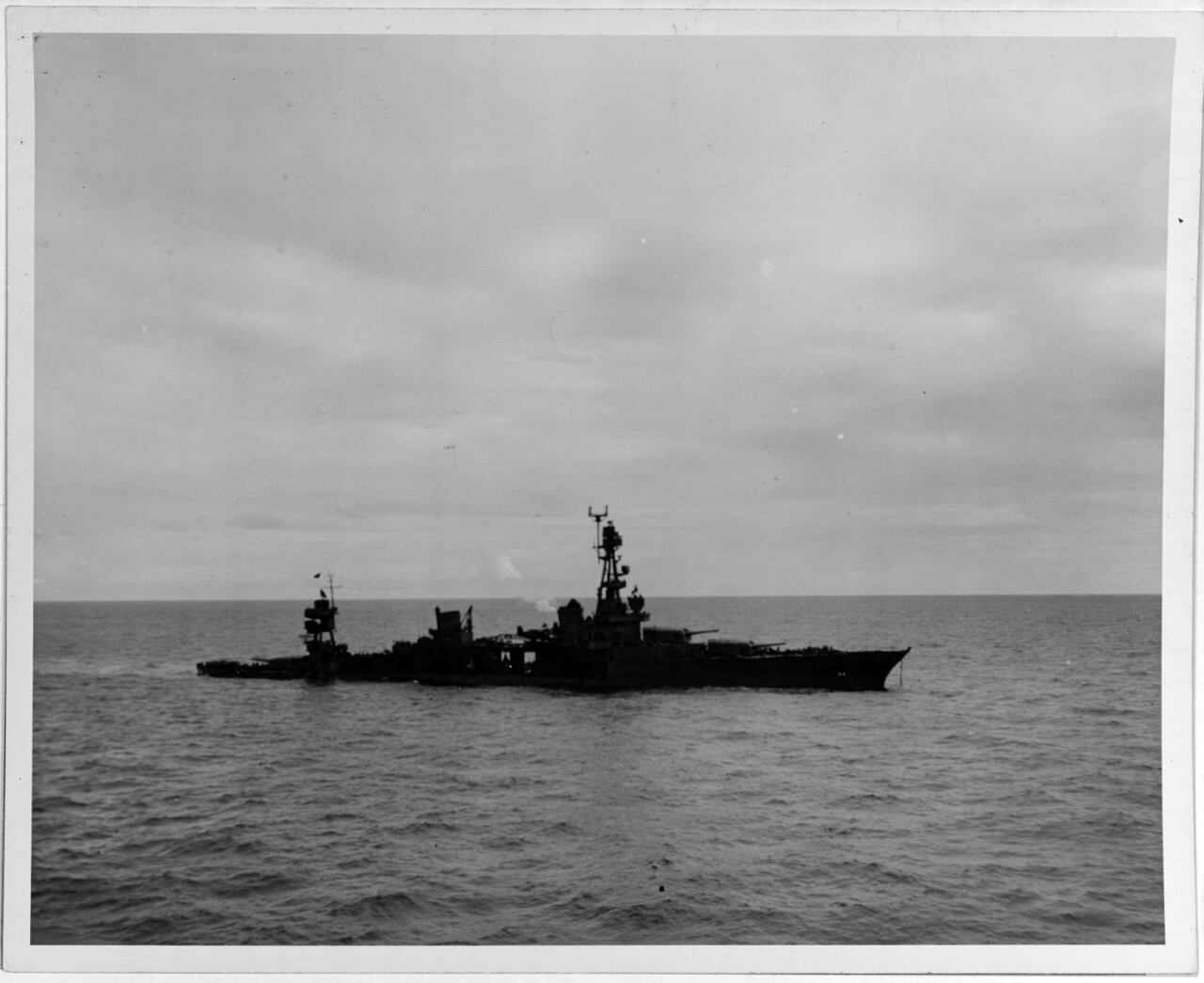
At 2000 – in an effort to keep Japanese aircraft from locating them – Giffen made a course change, reduced speed to lessen the ships’ phosphorescent wakes and ordered that no ship should open fire unless a target was clearly identified.
His orders, though appropriate, meant little, for the Japanese had already broken off their attack and were heading back to Rabaul.
Now the focus switched to saving the crippled Chicago. Work crews on board the stricken cruiser restored some power from emergency diesel generators, extinguished two fires and started counter-flooding to counteract the ship’s 11-degree starboard list.
At 2030, Giffen moved Louisville into position to send a towline, while the other ships steamed westward as a defensive line against further enemy assaults.
Louisville‘s skipper, Capt. Charles T. Joy, executed a tricky operation in taking Chicago under tow in the darkness.
Joy moved his cruiser 1,000 yards to Chicago‘s bow, then lowered a whaleboat containing the towing gear. The whaleboat inched close to Chicago, where its occupants transferred the gear to Chicago crewmen, who shackled the towline to the anchor cable and slowly let out 60 fathoms of chain.
By midnight the towline was in place, and Louisville started towing Chicago at 4 knots. They hoped to reach Espiritu Santo, where repairs could be made to the damaged cruiser.
They never made it.
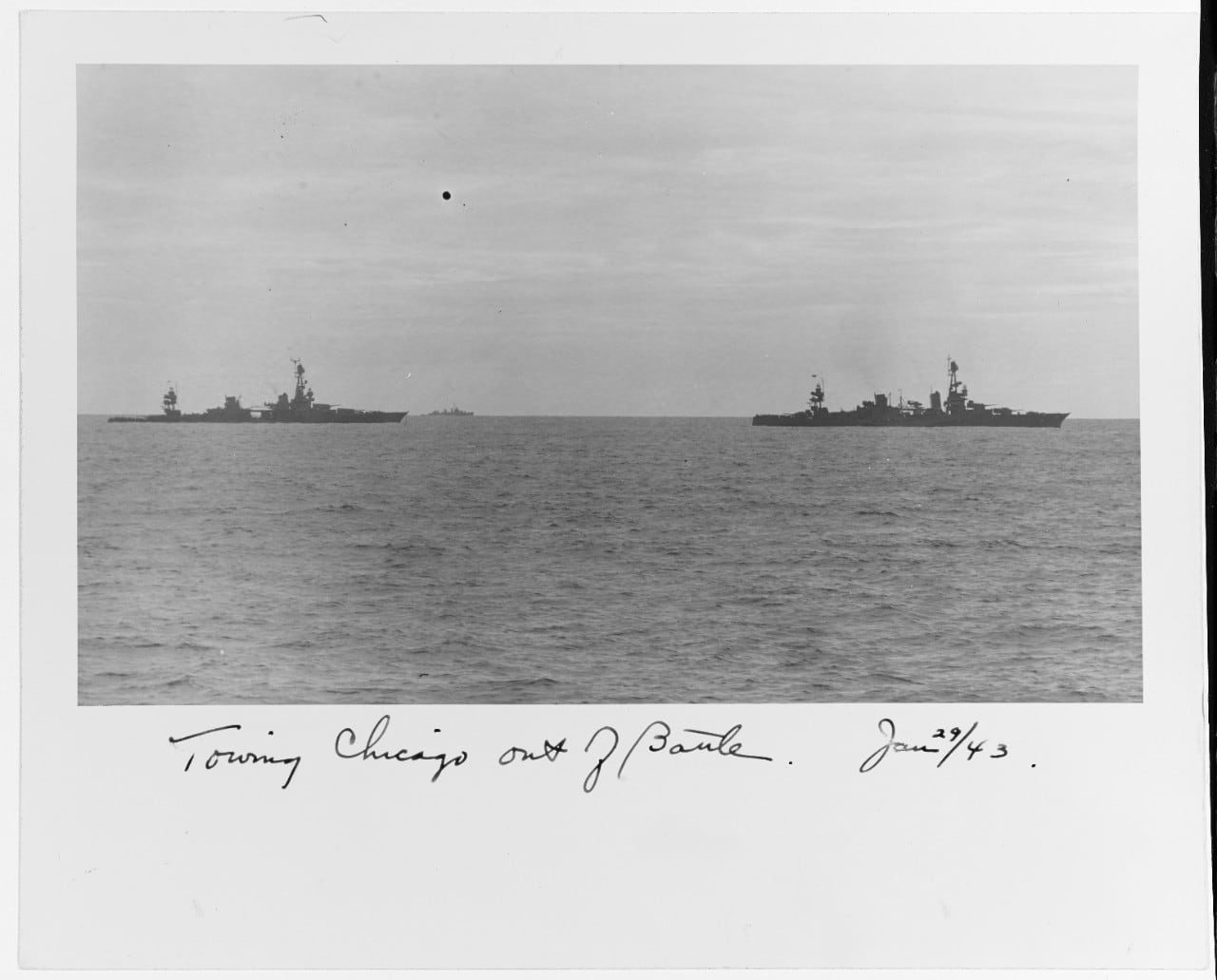
After receiving orders from Adm. Halsey to steam toward Efate, Giffen split Task Force 18 during the afternoon of Jan. 30.
Giffen took most of the ships along with him and left only six destroyers to screen the Chicago force. That meant that the bulk of his cruisers and destroyers, most of the air umbrella and anti-aircraft guns, and the force fighter direction officer headed away from the area.
To provide some air cover, Halsey moved the escort carriers Chenango and Suwannee closer and ordered a group centered on the carrier Enterprise to steam toward the stricken cruiser.
That same afternoon, Louisville transferred the towline to the tug Navajo, which had sped to the scene, and departed to join the other cruisers.
The Japanese air fleet commander at Rabaul, Vice Adm. Jinichi Kusaka, did not intend to let the damaged cruiser escape his clutches. During the afternoon of Jan. 30, he launched a group of Japanese aircraft to chase Chicago and send it to the bottom.
By 1445 those Bettys were south of New Georgia and headed toward Rennell Island.
At 1540, four American fighters spotted an advance Japanese aircraft and darted after it. A 40-mile chase ended with the Japanese plane falling in flames into the ocean, and though this left Chicago with no immediate air cover, the carriers moving into position would soon be able to pick up the slack.
At first it appeared the Japanese force would target Enterprise, 40 miles southeast of Chicago. American carrier aircraft rose to meet them, but instead of continuing toward the better-protected Enterprise, the Japanese swerved toward the stricken cruiser.
This change of direction made it almost impossible for the carrier aircraft to close with the enemy before they launched their torpedoes at Chicago, which was now defended by two American fighters.
As the Japanese started their run toward the cruiser, Lt. Cmdr. James H. Flatley led four fighters from Enterprise toward the action.
Although they arrived after the attack had begun, they charged straight into American anti-aircraft fire after the Japanese aircraft. Flying alongside Flatley, Ensign Edward L. Feightner followed one Betty into a thick cloud bank.
Fortunately, Feightner managed to find the Betty inside the clouds and shot it down.
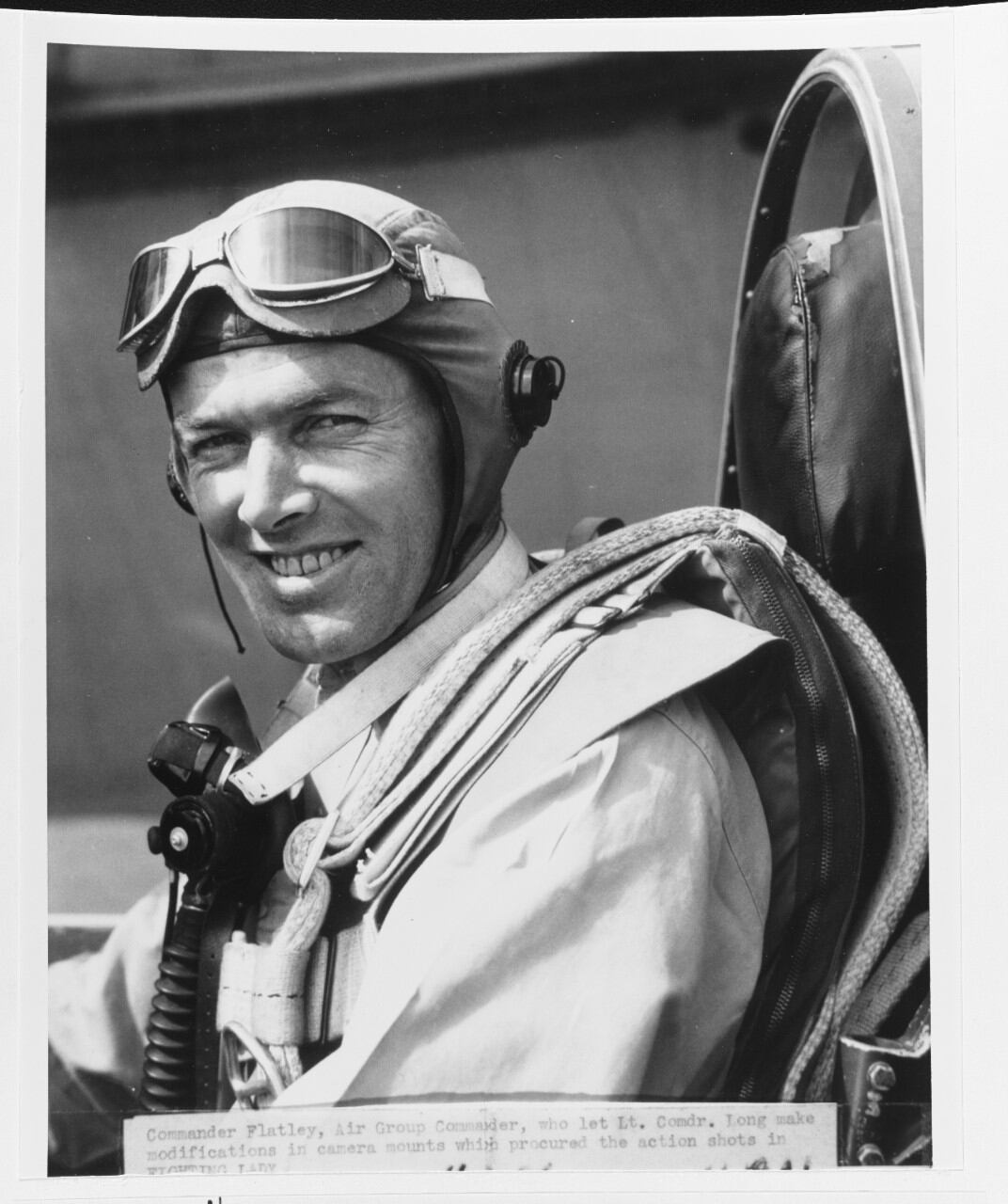
While Flatley and his small group sped to the aid of Chicago, the Japanese entered their final run-in.
Since Giffen had Task Force 18’s cruisers with him 30 miles to the east, they were out of position to help. All depended upon the six destroyers, three of which steamed on the unengaged side of Chicago.
One destroyer, La Vallette, stood squarely between the Japanese Bettys and the cruiser, determined to prevent any aircraft from getting beyond it.
La Vallette opened a furious fire when the enemy came within 10,000 yards. Its anti-aircraft batteries, combined with Chicago‘s, brought down six Japanese planes.
The Japanese, however, were able to inflict some damage of their own.
A spread of torpedoes churned toward La Vallette. The ship managed to avoid all but one, which ripped into its forward engine room and sent water gushing into it and the forward fire room.
Lt. Eli Roth, the ship’s damage control officer, and 20 other men died in the explosion.
Water Tender 2nd Class M.W. Tollberg was severely burned and blinded by a spurt of live steam from a damaged pipe. Although in enormous pain, Tollberg still managed to climb topside and reach an oil valve that needed to be closed.
Later, he was found by the ship’s medical officer still clutching the oil valve in a heroic attempt to close it.
Tollberg died two hours later.
Although damaged, La Vallette eventually steamed out of the battle area under its own power. Another ship rigged a towline and slowly towed the battered destroyer toward safer waters.

Navajo quickly started aligning Chicago‘s bow with the direction of the Japanese attack, to make the warship a smaller target.
Just when it seemed that the attack had been successfully repulsed and the remaining Bettys had been driven off, lookouts on Chicago spotted five torpedo wakes heading toward the cruiser.
At 1624, while traveling at the agonizingly slow speed of 4 knots, the cruiser suddenly shuddered from the blasts of four successive torpedoes tearing into its starboard side.
One torpedo struck forward and showered the bridge and deck with debris, while the others ripped apart the middle of the ship and created a raging inferno belowdecks.
The cruiser listed and started to sink.
Capt. Davis ordered Navajo to cut the towline and told his crew to abandon ship. Davis said that less than 20 minutes after the first torpedo exploded, the ship rolled slowly over on its starboard side and settled by the stern, with colors flying.
Six officers and 56 men went down with the ship.
Edwards, Waller, Sands and Navajo picked 1,049 survivors from the water.
As often happened after a naval contest in the Pacific, the Japanese boasted of a huge victory.
To divert attention from the catastrophe unfolding on Guadalcanal, where U.S. Marines and naval forces had seized the initiative and sent the Japanese army reeling, the Japanese government claimed its aircraft had sunk one American battleship and three cruisers and damaged others.
In fact, the Japanese had registered a minor victory in sinking Chicago, but they had also lost 12 Bettys – as well as one of their top torpedo bomber commanders, Higai.
However, because the enemy’s attention had been focused on the ships of Giffen’s task force, the transports were able to land their Marine replacements on Guadalcanal without interference.
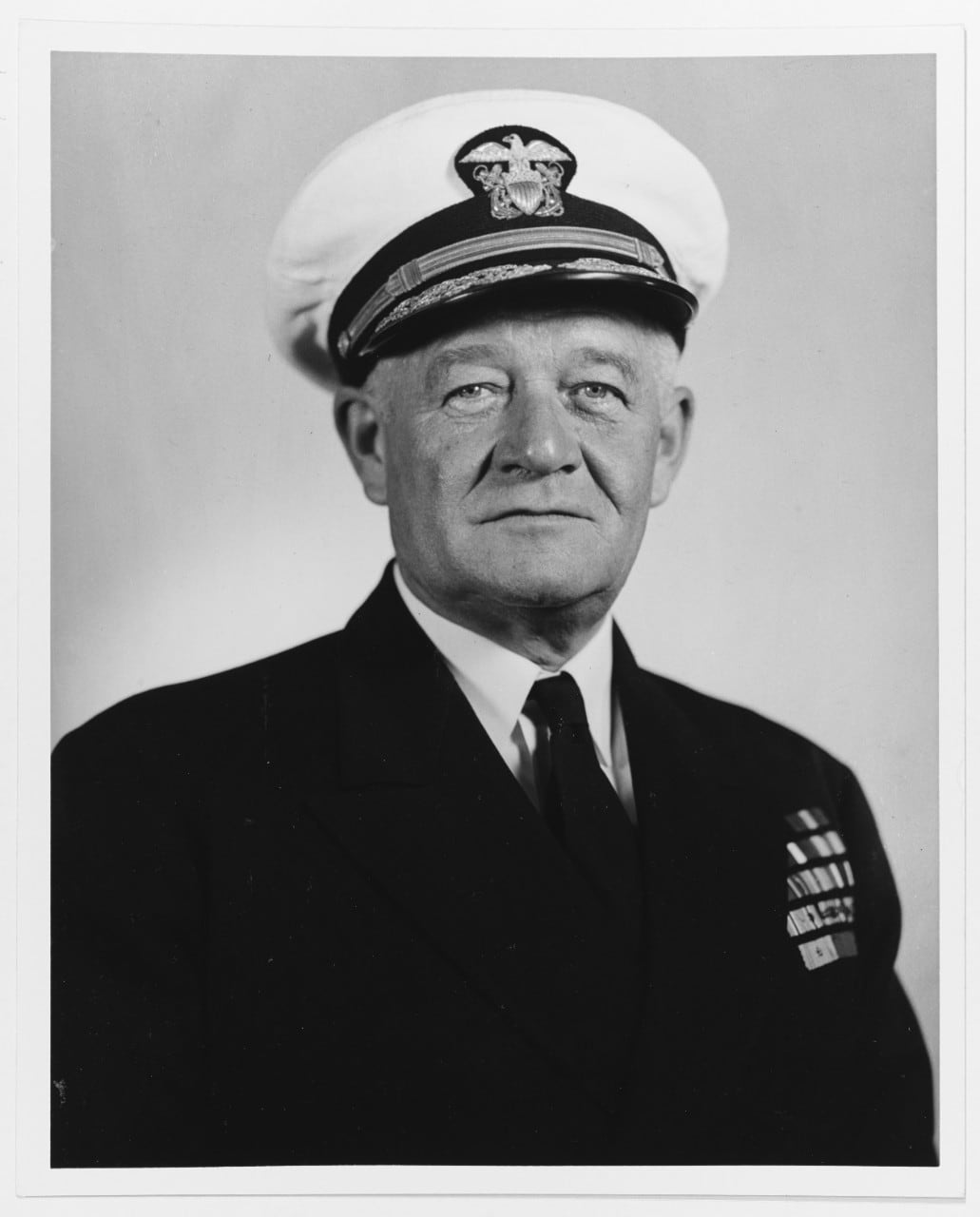
Numerous errors of judgment contributed to the loss of Chicago.
Giffen had been so obsessed with keeping his rendezvous that he left his escort carriers behind. He had also been so concerned with the threat from Japanese submarines that his ships steamed in poor formation for defense from an air attack.
American warplanes lacked any coordinated fighter direction and thus could not mount an effective defense when Chicago was threatened.
Giffen’s superiors, especially Halsey and Adm. Chester Nimitz, the commander in chief of the Pacific Fleet, were irate over the loss of Chicago.
Halsey, who had been frantically trying to assemble sufficient forces near Guadalcanal to blunt the Japanese offensive, described the loss of Chicago as a blow at any time, and just now we felt it with special severity.
Halsey had succeeded in stopping the enemy, but he knew that he needed every ship, every Marine, every aircraft to maintain momentum. The loss of a cruiser, especially when occasioned by command mistakes, made his task more difficult.
Nimitz had already been angered, even embarrassed, by earlier American naval losses in the Solomons. The Battle of Rennell Island did not help matters.
At first, he intended to include a harsh condemnation of Giffen in his official report, but he eventually watered down his remarks, stating that the loss of Chicago was especially regrettable because it might have been prevented.
However, Nimitz ordered that word of the cruiser’s sinking be withheld from the public. He also vowed in a staff meeting, “If any man lets out the loss of the Chicago, I’ll shoot him!”
The Battle of Rennell Island was not one of the war’s conclusive encounters in the Pacific. However, it occurred at a time when American forces appeared to have swung momentum in the Solomons in their favor and to have halted the Japanese advance in the South Pacific.
Any setback, no matter how small, was thus seen as a threat to the success of the American war effort.
Naval historian Samuel Eliot Morison offered a calmer summation of the Battle of Rennell Island.
In his History of United States Naval Operations in World War II, Morison wrote: “This defeat was due not only to a combination of bad luck and bad judgment, as at Tassafaronga, but to Giffen’s inexperience and his determination to make the rendezvous with Briscoe on time.
"Halsey’s endorsement on Giffen’s Action Report was a scathing indictment of mistakes in judgment; that of Nimitz was more tolerant.”
RELATED
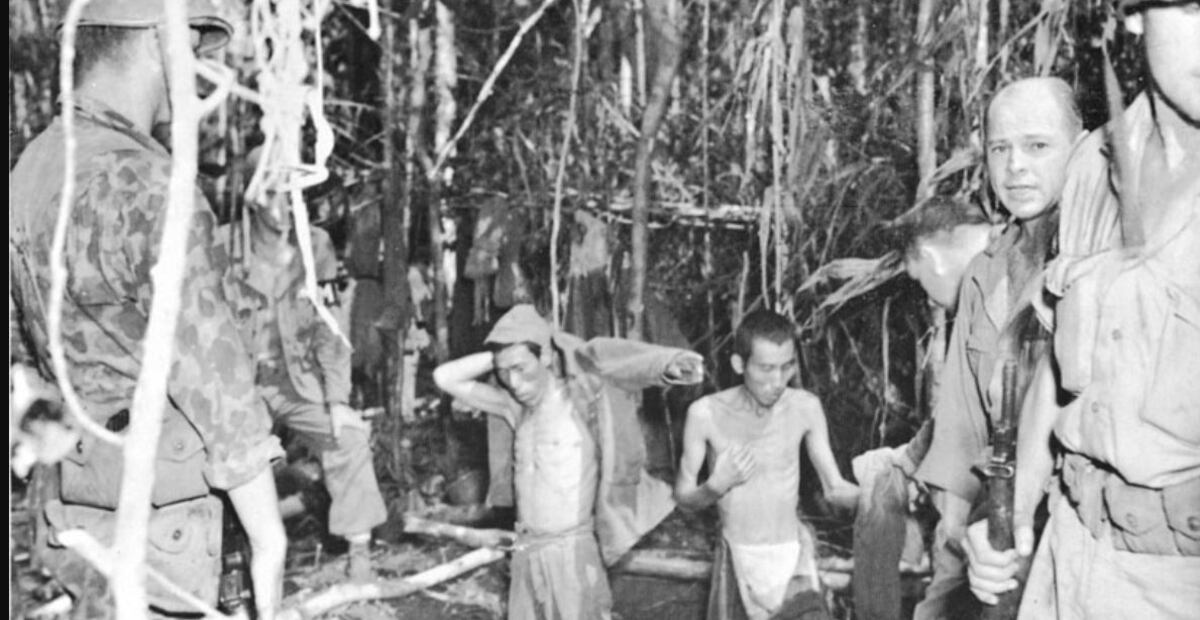
This article was written by John Wukovits and originally appeared in the March 2000 issue of World War II magazine, a sister publication of Navy Times. For more great articles, subscribe to World War II magazine today!




